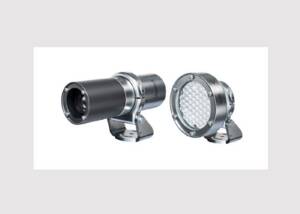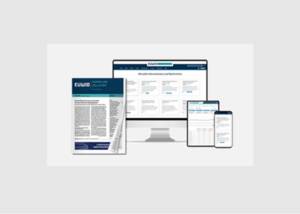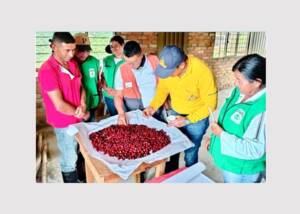Stora Enso Oyj Interim Report January-March 2021
News General news
Back on track
Improving performance and market conditions

Q1/2021 (year-on-year)
Sales increased by 3.1% to EUR 2 276 (2 207) million, due to higher deliveries and prices.
Operational EBIT increased to EUR 328 (180) million, due to lower costs.
Operational EBIT margin increased to 14.4% (8.1%).
Operating profit (IFRS) decreased to EUR 161 (262) million.
EPS was EUR 0.18 (0.19) and EPS excl. fair valuations (FV) was EUR 0.22 (0.11).
Cash flow from operations amounted to EUR 185 (146) million. Cash flow after investing activities was EUR -9 (-32) million.
The net debt to operational EBITDA ratio was 2.3 (2.3).
Operational ROCE excluding Forest division increased to 12.0% (7.8%)
Strategy implementation update
Stora Enso is planning to permanently close down pulp and paper production at Kvarnsveden and Veitsiluoto mills, as announced on 20 April.
TreeToTextile, a joint venture where Stora Enso holds a 25% share, invests EUR 35 million in a demonstration plant for sustainable textile fiber.
Dissolving pulp production at Enocell Mill will be discontinued during 2021, and the mill will be producing other pulp grades.
The conversion project at Oulu Mill was completed and production of krafliner is in a ramp-up phase.
The US-based Virdia operations were shut down in Q1/2021.
A feasibility study is ongoing regarding a possible expansion of the pulp and board production at Skoghall Mill in Sweden.
Preventive Covid-19 actions
Protecting employees and contractors health and safety during the pandemic has been Stora Enso's key priority. By being proactive and having extensive measures in place, the Group has also been able to continue operations and serve customers with minimal disruptions.
Outlook
The global economy is recovering from the impacts of the pandemic and the demand for Stora Enso's products, except for graphic paper, is healthy. Operational EBIT in 2021 is expected to be higher than the 2020 operational EBIT as guided earlier.
Stora Enso will conclude its EUR 400 million profit protection programme by the end of Q2/2021, two quarters ahead of the plan. The accumulated continuous and total savings from the beginning of the programme until Q1/2021 amount to EUR 360 million and EUR 460 million, respectively. Continuous savings of EUR 50 million were achieved in Q1/2021. Remaining targeted savings are expected to be reached by the end of Q2/2021.
The Oulu Mill conversion is estimated to have approximately EUR 10–15 million negative impact on the Packaging Materials Q2/2021 operational EBIT. For 2021, the total negative impact on operational EBIT is forecasted to be approximately EUR 40–50 million. The previous estimate was EUR 45–55 million. The mill is planned to reach designed capacity by the end of Q2/2021 and the commercialisation of product portfolio by the end of 2021. The forecast to reach operational EBITDA break-even is now in Q3/2021, thanks to successful ramp-up and good market conditions. Previously it was estimated to be in Q1/2022.
Stora Enso’s President and CEO Annica Bresky comments on the first quarter 2021 results:
“Global trade has rebounded faster than expected this year and the economic recovery in China and USA are naturally important factors. The quick response from governments with fiscal stimuli has also helped to improve global economic performance and evade deep recessions. Furthermore, the fact that vaccines have been developed much faster than we've ever seen has given a boost of hope. Global supply chains have largely proven resilient. With all this, it is encouraging that we are starting to see signs of light at the end of the tunnel.
For the year’s first quarter I am pleased to deliver yet another solid result, and we are getting back on track with many of our financial targets. Our operational EBIT was up considerably year on year, excluding Paper it nearly doubled to reach over EUR 360 million. We also increased our sales by 14% year on year excluding Paper, to close to EUR 2 280 million. For the full year, the demand outlook continues to be healthy for all businesses except for paper. The operational EBIT in 2021 is expected to be higher than in 2020. We are ahead of plan with our EUR 400 million profit protection programme and it will be concluded already by the end of the second quarter 2021.
There is a positive market sentiment for all our key business areas, except for our Paper division, which continues to suffer from an accelerated structural decline. The rebound of our growth businesses is a proof point of our strategic direction and ambitions. It is especially rewarding to see our ability to adapt, to take advantage of our opportunities and innovate despite the unique market conditions.
Our packaging divisions are both performing well. In Packaging Materials, we see strong demand for consumer and container board. In Packaging Solutions, higher European volumes in combination with a recovering China business increased our sales. Our Wood Products business continues to thrive both for traditional sawn products and building solutions, where we are expanding outside our European home market.
Our Forest division has experienced advantageous harvesting conditions this winter, ensuring efficient wood supply to our Nordic and pan-European production units. This in turn ensures pulp availability to support the uptick in demand across our business. Recovering pulp prices, combined with strong production and deliveries, improved the profitability of our Biomaterials division.
The paper market continues to suffer from demand decline and the resulting overcapacity, which unfortunately has caused us to initiate a plan to permanently close down two of our paper mills: Kvarnsveden in Sweden and Veitsiluoto in Finland. Closing operations that impact our staff is always a last resort, and one based on thorough evaluations. However, in order to remain competitive in a rapidly declining paper market, the closing of unprofitable assets is needed. The closure plan, which is subject to codetermination negotiations, would have our highest priority.
Our transformation investment in Oulu, from paper to kraftliner, is progressing well. Since the January launch, the ramp up is proceeding ahead of plan. We have customer deliveries and there is strong market demand. I’m also very pleased that we will be able to reach EBITDA breakeven already in the third quarter this year. When fully ramped up, premium kraftliner grades from Oulu will strengthen our position in a growing packaging market. This conversion is a prime example of where we are heading as a company. Our focus is increasingly on high-margin markets where we already have a strong foothold. One such important market is packaging, in addition to wooden building solutions and new biomaterials innovations. These three areas are core for our future growth with our renewable materials.
Another aspect of our updated strategy has been to identify the product segments with the best opportunities for leading market positions, growth and profitability. Consequently, we have decided to exit the market for dissolving pulp for viscose production globally. Our current global market share is very small, and we do not see that we will be able to grow that position. The price differentiation between dissolving pulp and market pulp is small and does not motivate the increase in complexity for our pulp product portfolio and our production costs. We will continue innovating for a better and more sustainable technology for biobased textiles. TreeToTextile is such a venture where we, together with other leading companies, have invested in what we believe will become a ground-breaking production technology for sustainable textiles.
Moving forward, our focus remains on keeping our employees safe from the ongoing pandemic and executing on our updated strategy in order to reach the financial targets as disclosed last year. Moreover, we want to show leadership in innovation and be a constructive partner to governments around the world and the EU Commission in the pursuit of the Green Deal’s vision. Nearly five years have passed since the Paris Agreement was adopted. As a significant forest owner and leader in renewable materials, we are fully committed in helping to combat climate change. We help our customers make their businesses circular by replacing fossil-based materials with renewable biomaterials. At the foundation is the forest. We practice sustainable forestry because we want prosperous forests today and for the next generation.
The renewable future grows in the forest.”










